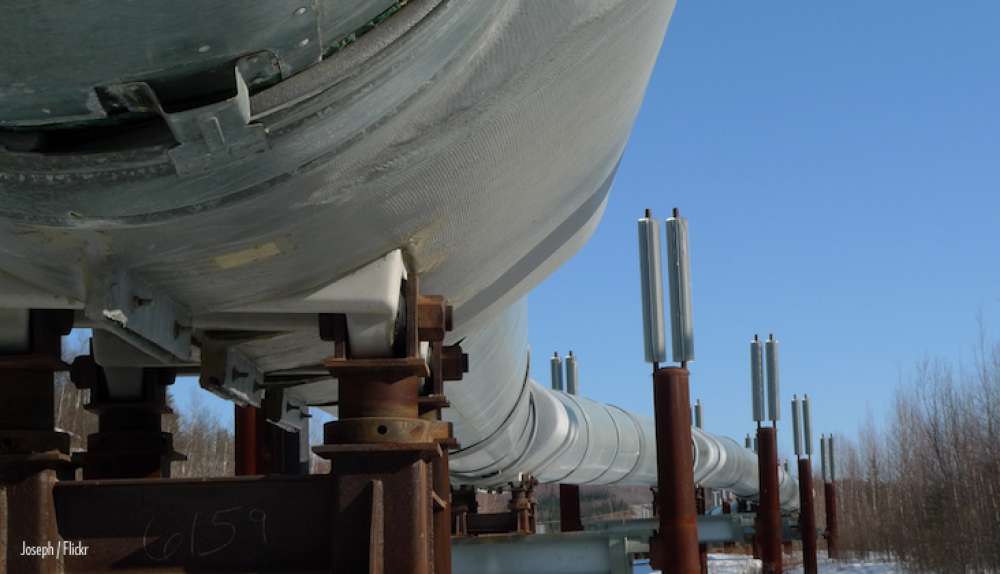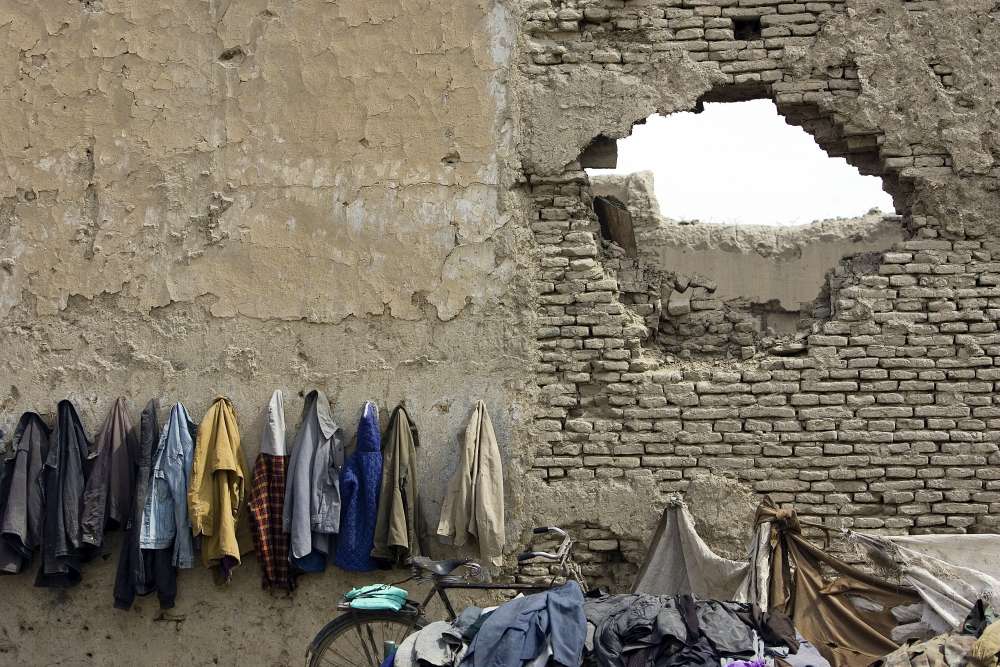Addressing the Russian Energy Challenge: Why Regulation Trumps Geopolitics

Energy Geopolitics Are Back in Europe
In European capitals, an increasingly assertive Russia has triggered renewed concerns related to the security of EU gas supplies. EU leaders have vivid memories of January 2009 when Russian gas supplies were cut for 13 days, affecting a total of 16 EU member states. Clearly, the ongoing Ukraine crisis has further politicized Russian energy trade with Europe, and added a geopolitical dimension to already strained Eurasian gas relations. In short, European energy has re-emerged as a prominent security concern, both in the EU and in the United States. The heightened security concerns have led many to suggest a “muscular” energy policy toward Russian gas that looks to replace Russian gas with alternate sources, including liquefied natural gas (LNG). However, such plans are unrealistic and ignore Europe’s advantages. Instead of looking to replace Russian energy in Europe, the EU needs to use its regulatory power to turn the tables. If the EU makes the right kind of progress on the common energy market, then it will dictate the rules to Russia.
To be sure, Russian gas has never been just another commodity; if it had been seen that way this changed in 2006, when Russia stopped gas deliveries through Ukraine for the first time. Russian gas presents a challenge for the EU in two ways: supply and divisive pricing.
Gazprom provides about 30 percent of EU gas supplies, and up to 100 percent of gas consumption of eastern EU member states Bulgaria, Estonia, or Slovakia. A series of stress tests conducted in the fall of 2014 highlighted a persistent European vulnerability to Russian gas supply disruptions. In the absence of solidarity mechanisms, a short term cut-off would seriously affect Eastern European countries such as Poland and the Baltics, but also Finland. Western Europe, including Germany and Italy, remains exposed to serious medium-term supply risks, too. Even in a cooperative scenario, some countries remain heavily affected.
What is more, Moscow has in the past used discriminatory pricing strategies across countries and played “divide and rule” tactics by incentivizing individual governments into lucrative energy deals. That way, in the past the Kremlin had also lured Budapest and Sofia, but also Western capitals such as Rome to connect to Moscow-sponsored pipelines such as South Stream, which rivaled projects the EU backed as part of a “Southern Gas Corridor” to bring non-Russian energy sources into Europe.
Arguably, the events of 2014 have not only pushed energy even higher up on transatlantic foreign policy agenda, but have also further securitized energy policy more generally. While Brussels and Washington have for some years promoted alternative supplies of gas to the EU, energy has now emerged as the most prominent subject for strategizing on how to deal with the Kremlin’s increasingly assertive foreign policy. Energy, therefore, has become both a tool for Western foreign policy toward Russia and an end thereof. This marks a new level in EU external energy affairs. For the first time, the West is making deliberate use of Russia’s dependence on energy revenues to try to induce Moscow to change course. The Russian energy sector, providing for some 50 percent of state income, was a prime target of Western sanctions on Russia. While the oil sector became the key target, Russia’s gas industry has started to be affected too. As the EU-28 demonstrated on June 17, 2015, they are committed to keeping sanctions going until at least early 2016.
Moreover, the EU’s energy policy agenda has seen some important shifts. The proposed Energy Union seemingly prioritizes “energy security, solidarity, and trust” over other policy objectives such as enhancing research and development in energy. Further, in the context of the Energy Union debate, suggestions have been made that the EU set up common purchase vehicles for dealing with external supplies, thus making use of the collective purchasing power the EU’s 400 cubic meters (bcm) gas market, the world’s largest in terms of imports.[1] This, effectively, amount to a mercantilist turn in foreign energy policy thinking, aimed at using market power for non-market related policy goals. Finally, voices have been raised suggesting that the EU eventually ‘wean itself of Russian gas in order to “end Russia’s energy stranglehold,”[2] hence limiting exposure to the perceived security threat coming with Russian supplies. The aim of diversifying import sources would therefore give way to the goal of fully diversifying away from Gazprom gas.
Cutting Russian Gas Out of the European Energy Market Is Hardly Feasible
While proposals pertaining to a more “muscular” approach to European external energy affairs have gained traction in high-level policy debates, they in fact face a harsh reality check, including legal frameworks, physical limitations, and economic imperatives.
To start with, replacing Russian gas in Europe’s import portfolio will be a demanding task against the backdrop of existing long-term contracts with Russia that hardwire more than 100 bcm into the European import portfolio far into the 2020s.[3] Moreover, maturing European gas fields imply there are growing import needs even with flat or falling demand going forward. Norway’s production is already near its limits, Dutch supplies are capped by law, and U.K. production is in decline, while production from shale gas should not be expected to reach more than token quantities before the mid-2020s, if then.[4] Moreover, new pipelines from alternative suppliers have long lead times, and the prospects of additional gas from Northern Africa and the Caspian stretch far into the future, which add to turmoil in Libya and limited supply options for the “Southern Corridor” beyond Azerbaijan. Though much debated, post-sanction gas prospects in Iran remain a long shot at best, as do Eastern Mediterranean supplies, not least due to difficult business environments, required investment needs, and infrastructure bottlenecks. In the short and medium term, alternative supplies would therefore predominantly have to come from LNG. With currently around 200 bcm of available European LNG regasification capacity, the problem here obviously does not lie in a lack of ability to absorb more LNG volumes, although there are infrastructure constraints between markets (e.g., insufficient pipeline volume from Spain to France). Available capacity would certainly be sufficient to replace the roughly 140 bcm of gas that Gazprom sent westwards in 2014. The fact that European regasification terminals presently run at only one-fifth or less of their capacity clearly indicate that LNG exporters have preferred higher-priced Asian markets to European ones.
This, in turn, points to a significant pricing challenge coming with replacing Russian gas with “-162°C cargos” from Qatar, Algeria, or Australia and potentially the United States going forward. To be sure, LNG will be a significantly more attractive supply option for Europe than it has been in the past, thanks to a narrowing spread between Atlantic Basin and Pacific Basin gas prices. LNG prices into Japan, which had hovered around $15 per million British Thermal Units (MMBTU) by mid-2014 still, have come down to $7 by mid-2015, effectively matching the British national balancing point (NBP) spot marker and German prices for Russian pipeline gas. With global liquefaction capacity expanding significantly at present, Asian prices may fall and stimulate additional European imports, as would U.S. LNG exports ramping by 2016 (though arguably some LNG trains might not go online in the new pricing environment). The soft oil market will further depress oil-indexed price levels of Russian gas (which still make up for some 50 percent of contracted volumes), with the typical time lag of about half a year. This represents an improvement for the European supply outlook. Still, Russia has demonstrated that it is willing to defend European market share at the expense of higher price levels. Gazprom has come to revisit several long term contracts in the aftermath of the 2009 price drop, has offered more attractive deals to countries that had invested in LNG facilities, such as Lithuania, and increasingly priced its gas against the NBP marker. It clearly is in the position — and determined — to undercut LNG from the United States or elsewhere if strategically necessary. Against the backdrop of a still ailing economy and the competitive edge low energy prices have given to the U.S. industry, European consumers will remain reluctant to pay a significant “security premium” for LNG over Russian supplies.
To be sure, EU countries could support supply diversification by way of mandated regulation. Effectively, this amounts to obliging consumers to take gas volumes in the shape of LNG regardless of whether cheaper (piped gas) alternatives are available; and it means that molecules from, say, Qatar, are given preference over others — the ones originating from Siberia. However, this option not only comes with costs for consumers, as Poland had to learn when facing a significant price premium for its LNG contract with Qatargas, it also faces clear legal limits, as heavy-handed regulation of this sort would effectively amount to a return to the public utility model of old. This would be incompatible with current EU law and effectively undo more than 20 years of EU energy sector reform. The same also holds true with a view to the idea of pooling purchasing power, be it on a country or EU level. A state-sanctioned monopsony would run counter to the free market principle underpinning European legislation.
Finally, the EU could also consider replacing Russian gas with other sources, in the shape of fuel switching. While there are limits in the short term, there clearly is potential in replacing gas with oil for heating households, or in fostering domestically available resources in electricity production — an option that would presumably find notable support in Eastern European countries. Depending on the estimates, Russian gas could thus partially give way to Polish hard coal or Bulgarian lignite. (Germany fostering renewables indeed replaces gas, although rather unwillingly as the intention was to target coal instead, in addition to nuclear.) This move, however, means trading climate for security goals. Not only would this move put the emission and decarbonization targets the EU has agreed on in serious question, up to 2030 and beyond. It would also endanger the EU’s traditional leadership role in the UN climate negotiations. Climate policy represents one of the few policy areas where the EU exerts true leadership and where it has a track record of successfully shaping global policy. It is, therefore, the one area where the EU can hardly afford to lose its standing and impact, notably against the backdrop of rising Asian economies and a looming shift in global negotiating power.
…
To read the rest of the paper, please visit the the German Marshall Fund of the United States online. For references, please refer to the full policy paper.







